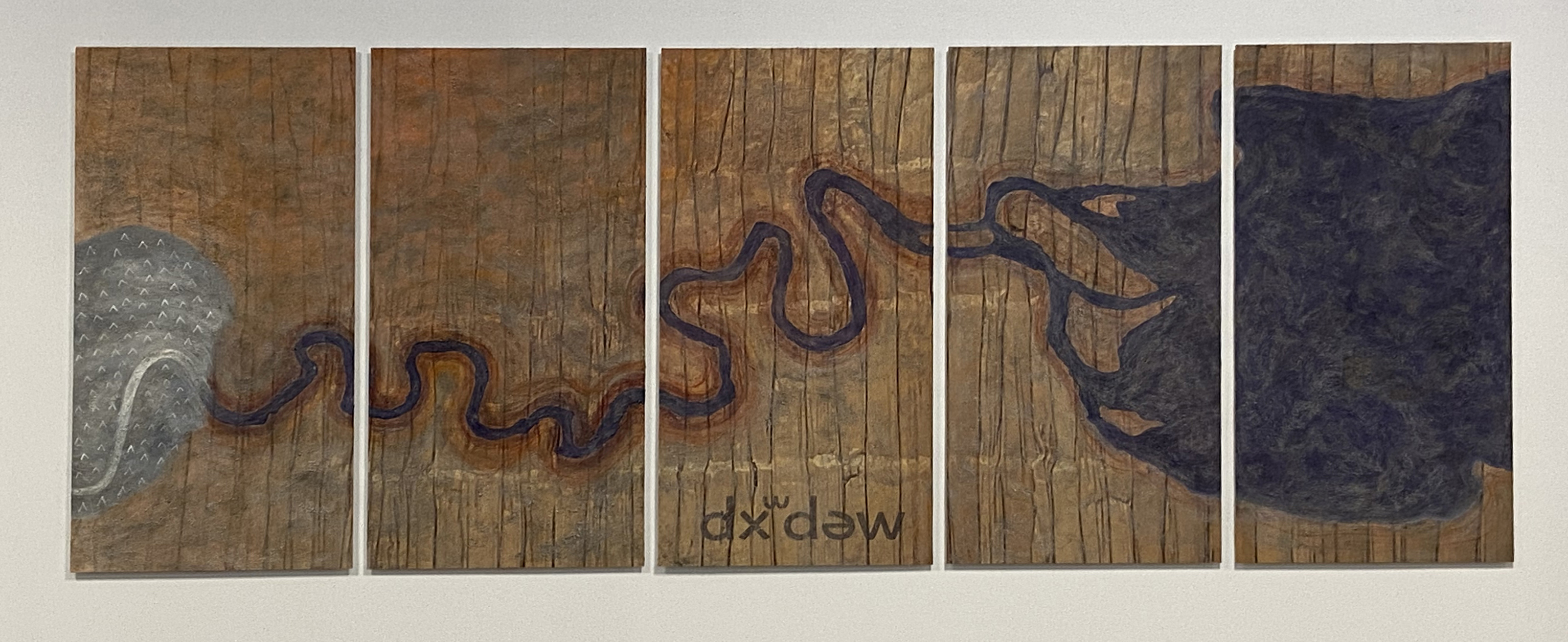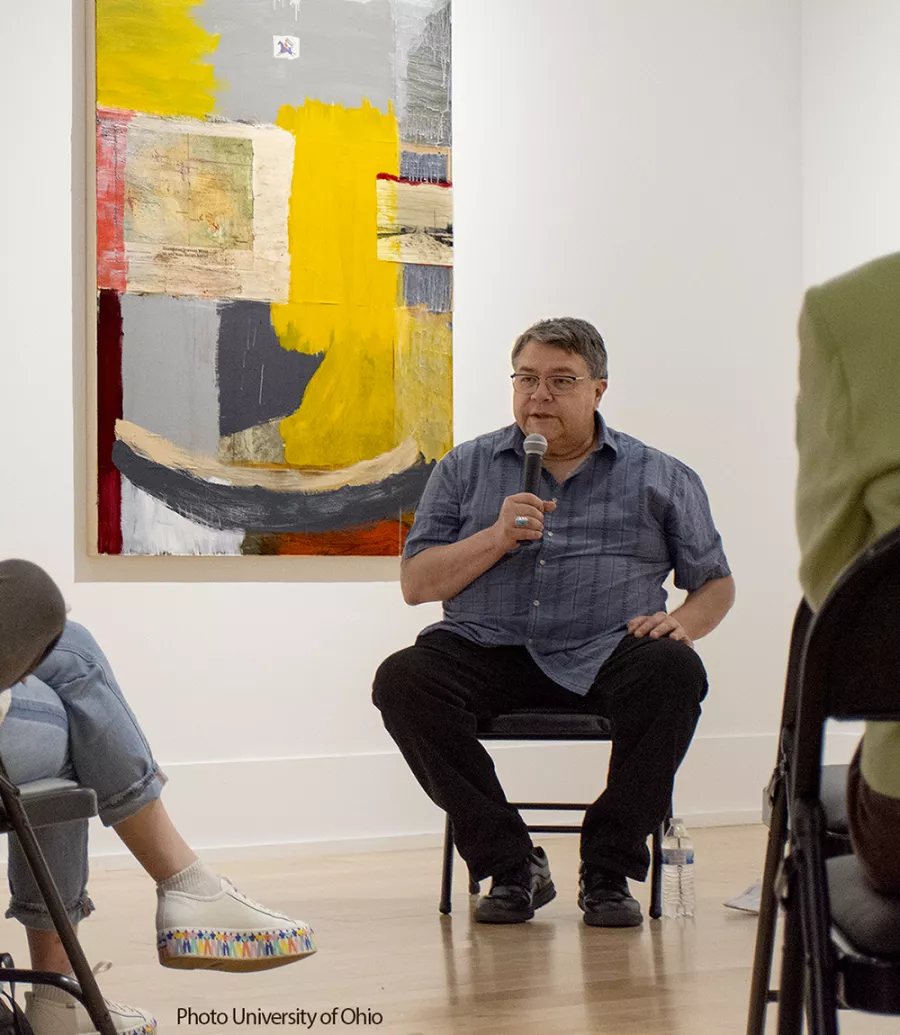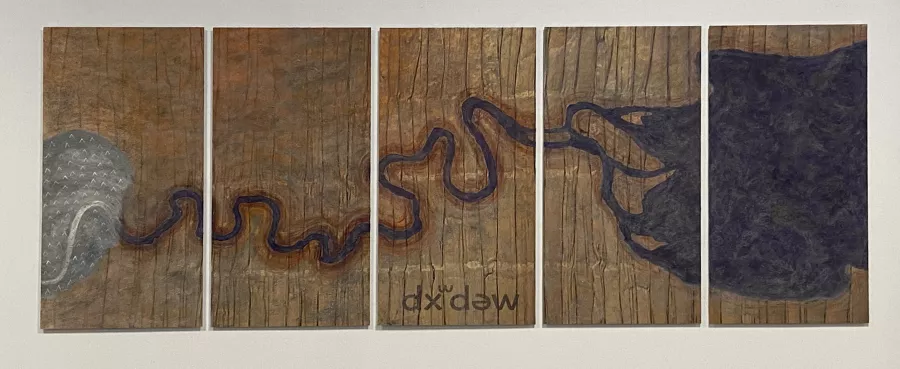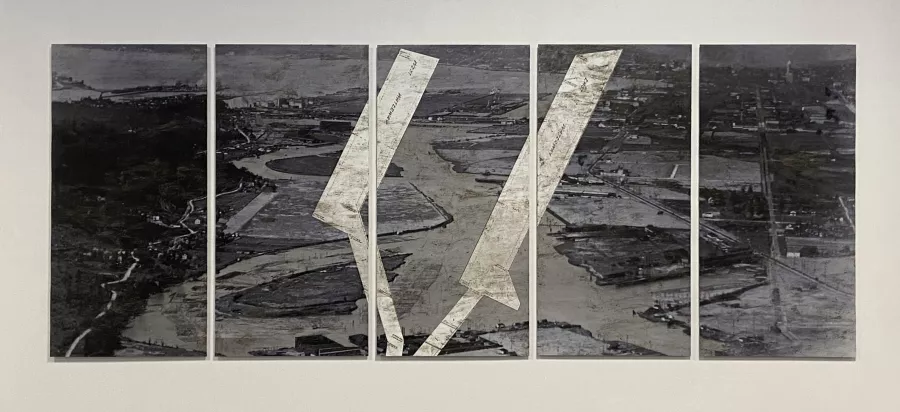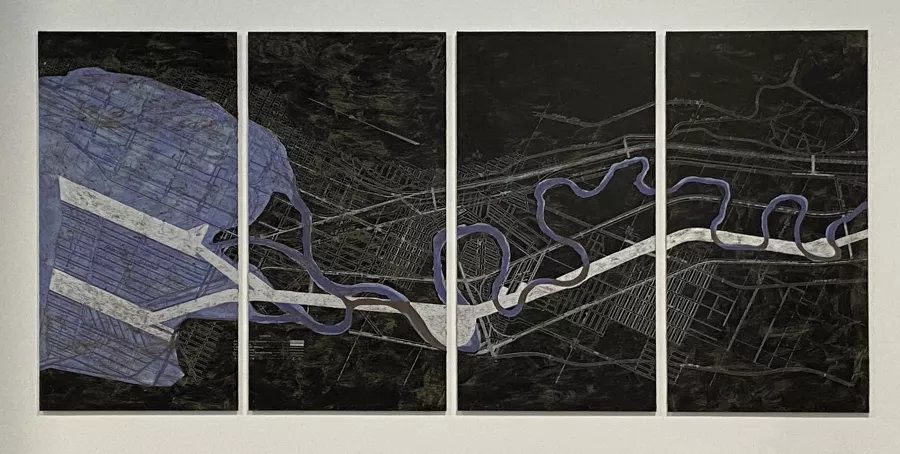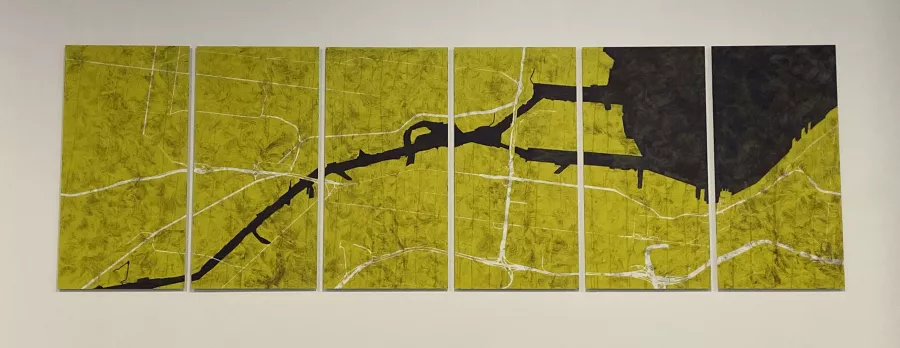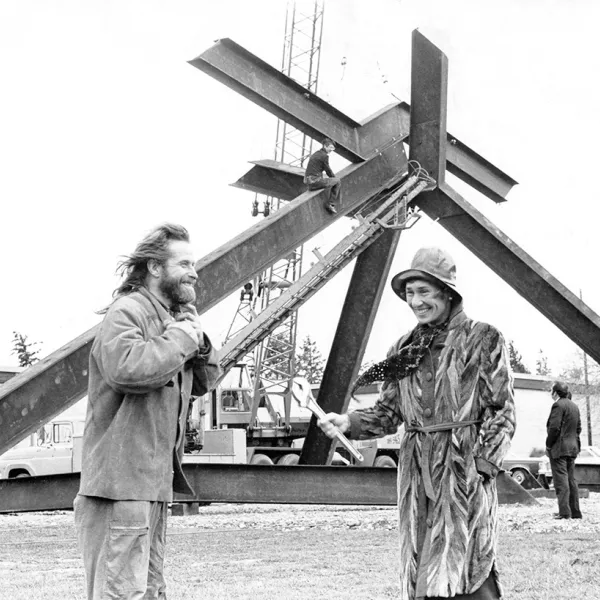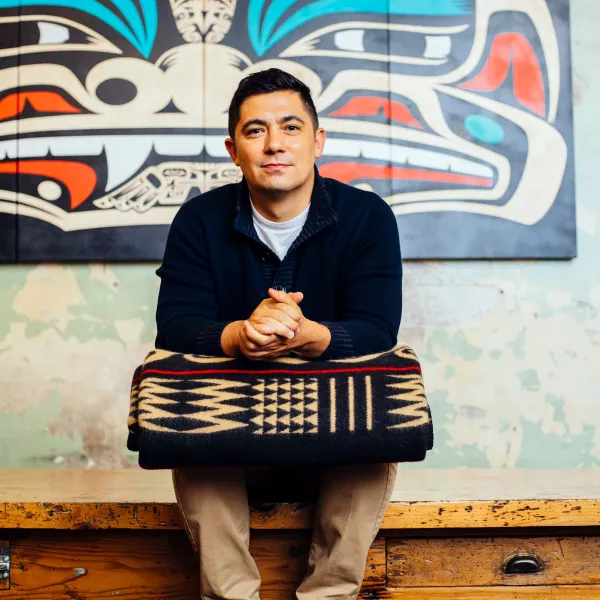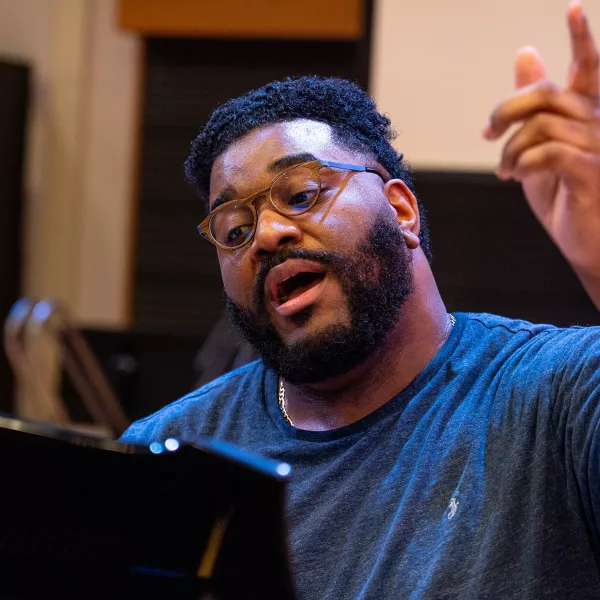The Seattle Convention Center is now home to a collection of four massive works of art depicting the transformation of the Duwamish River, created by Western Washington University’s John Feodorov, an artist and associate professor at Fairhaven College of Interdisciplinary Studies.
Feodorov’s “Four Views on a River” was commissioned as part of the new art collection in Seattle Convention Center’s Summit building. Located in Summit’s sprawling Exhibit Hall Lobby, the four massive pieces are made up of four to six panels 8 feet high and totaling 16 to 24 feet long. And each collection depicts a different point in the history of the Duwamish, from its meandering route before colonization to its current role as a major shipping lane and Superfund site.
“The images are stark and abstract, allowing the viewer to engage with them on their own terms without feeling led by the hand,” Feodorov wrote in his artist statement.
“To me, they are beautiful, yet also uncomfortable and saddening. To the local Native peoples, the river is alive. I want to show that, despite its mutilation and exploitation, it has also survived and retains its power.”
